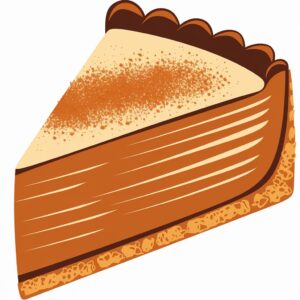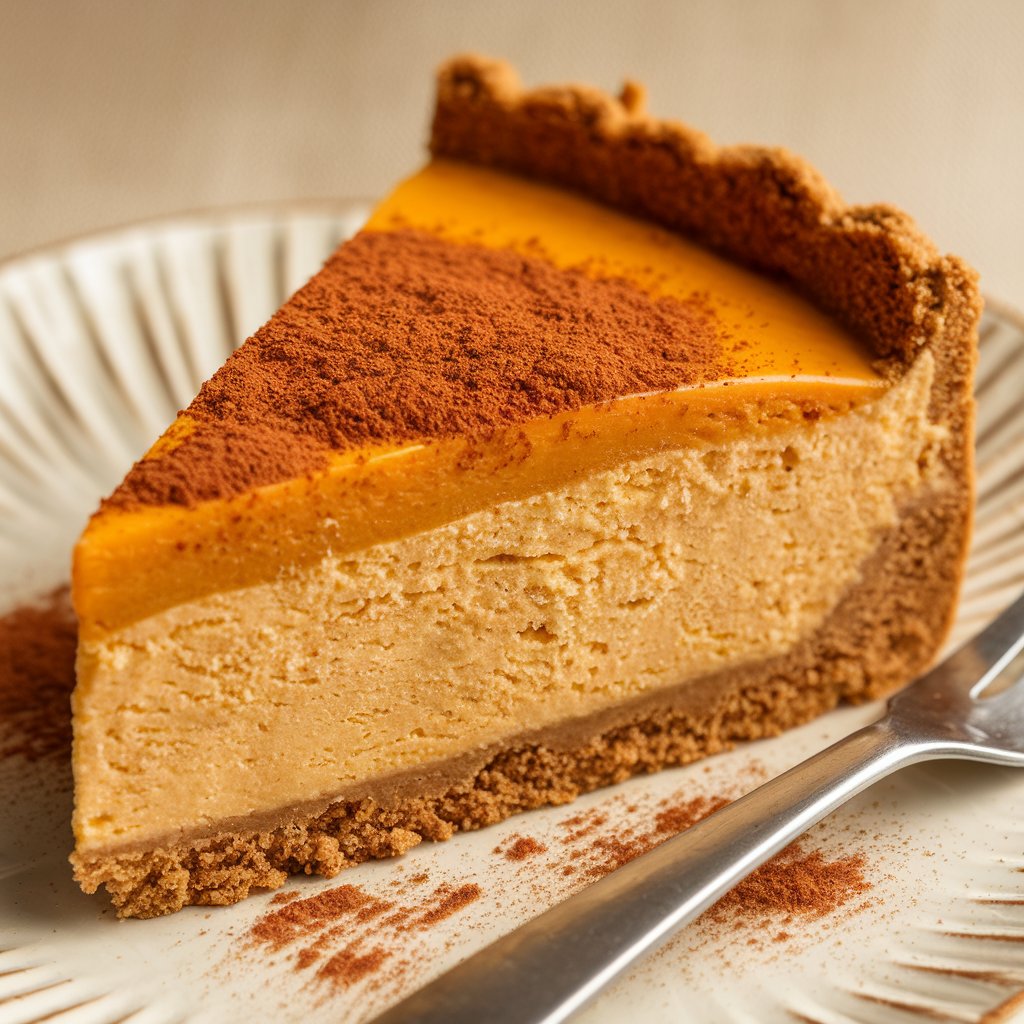Pumpkin cheesecake is a delightful fusion of creamy cheesecake and the rich, spiced flavors of pumpkin. As the autumn season rolls in, bringing with it the aroma of pumpkin spice, many dessert lovers turn to this unique treat. But what exactly does pumpkin cheesecake taste like, and how does it compare to other beloved desserts like traditional cheesecake or pumpkin pie? This article dives deep into the world of pumpkin cheesecake, exploring its flavor profile, variations, and more.
Introduction
Pumpkin cheesecake has steadily grown in popularity, especially during the fall and winter months. This dessert combines the smooth, rich texture of cheesecake with the warm, spiced flavor of pumpkin, making it a favorite for holiday gatherings. But beyond its seasonal appeal, pumpkin cheesecake offers a unique tasting experience that sets it apart from other desserts.
Whether you’ve never tried pumpkin cheesecake or are curious about how it stacks up against other pumpkin-flavored treats, this article will take you through everything you need to know. From the origins of pumpkin cheesecake to its various recipe adaptations, and even how to make your own at home, we’ll cover all aspects of this delicious dessert.
History of Pumpkin Cheesecake

The history of pumpkin cheesecake is a relatively modern one. Cheesecake itself dates back to ancient Greece, but the combination of pumpkin and cheesecake is a more recent development, likely gaining traction in the United States as pumpkin became a staple in fall desserts.
Pumpkin pie has long been a symbol of autumn, especially in the U.S., where it is traditionally served at Thanksgiving. The incorporation of pumpkin into cheesecake likely evolved as a way to offer a richer, more decadent alternative to pumpkin pie, combining the beloved flavors of the season with the luxurious texture of cheesecake. This fusion of flavors creates a dessert that is both familiar and innovative, appealing to those who love both pumpkin pie and cheesecake.
Describing the Taste of Pumpkin Cheesecake
Flavor Profile
At its core, pumpkin cheesecake marries the creamy, tangy flavor of cream cheese with the sweet, earthy taste of pumpkin. This combination is elevated with the addition of classic pumpkin spices—cinnamon, nutmeg, and ginger—giving the dessert a warm, comforting flavor. The result is a cheesecake that is rich and creamy, with a slight tang from the cream cheese, balanced by the sweetness of the pumpkin and the spices that evoke the essence of autumn.
The texture of pumpkin cheesecake is another defining characteristic. It is typically dense and creamy, with a smooth consistency that melts in your mouth. The crust, often made from graham crackers or gingersnaps, adds a contrasting crunch that complements the soft filling.
Pumpkin cheesecake is usually less tangy than traditional cheesecake because the pumpkin and spices tend to dominate the flavor profile. However, this doesn’t diminish the cream cheese’s role in providing a rich, velvety base that carries the pumpkin flavor beautifully. The spices are generally subtle, enhancing the natural sweetness of the pumpkin without overpowering the dessert.
Comparisons with Other Desserts
When comparing pumpkin cheesecake to traditional cheesecake, the most noticeable difference is the flavor. Traditional cheesecake is often vanilla-flavored and can be quite rich and tangy, depending on the recipe. Pumpkin cheesecake, on the other hand, is milder in tanginess, with the spices adding complexity to its flavor profile.
Compared to pumpkin pie, pumpkin cheesecake is richer and creamier. While pumpkin pie is typically lighter and more custard-like, pumpkin cheesecake offers a denser, more substantial bite. The inclusion of cream cheese adds a luxurious texture that sets it apart from the lighter, airier consistency of pumpkin pie.
The choice of crust also plays a significant role in the taste experience. A graham cracker crust provides a sweet, buttery base that pairs well with the creamy filling. A gingersnap crust, on the other hand, adds a spicy kick that complements the pumpkin and spices, making each bite more complex and flavorful.
Variations in Recipes
The taste of pumpkin cheesecake can vary depending on the recipe. Some versions might include a swirl of caramel or chocolate, adding an extra layer of flavor. Others might use a gingersnap crust instead of the classic graham cracker, introducing a spicier, more robust base.
Toppings also play a significant role in the overall flavor. A dollop of whipped cream can lighten the richness, while a drizzle of caramel adds sweetness and depth. For those who prefer a bit of crunch, adding chopped nuts on top can introduce a satisfying texture contrast.
Making adjustments to the basic recipe can also alter the flavor. For example, using fresh pumpkin puree instead of canned can provide a more intense pumpkin flavor, though it might require additional seasoning to balance the taste. Similarly, substituting the spices or altering their quantities can create subtle differences in the final product.

Nutritional Information and Dietary Considerations
Nutritional Breakdown
Pumpkin cheesecake is a decadent treat, and like most desserts, it is best enjoyed in moderation. A typical slice can contain anywhere from 300 to 600 calories, depending on the recipe. It’s also relatively high in fat and sugar, making it a rich indulgence.
For those with dietary restrictions, there are several ways to modify pumpkin cheesecake to suit different needs. Gluten-free versions can be made by using gluten-free graham crackers or nuts for the crust. Vegan pumpkin cheesecake is also possible, often using cashew or tofu-based fillings to mimic the creaminess of traditional cheesecake. These alternatives can still offer the delightful taste and texture of pumpkin cheesecake, though they may be slightly different in flavor.
Dietary Modifications
- Gluten-Free Pumpkin Cheesecake: To make a gluten-free version, simply substitute the crust with gluten-free graham crackers or a mixture of ground nuts and butter. The filling remains largely the same, ensuring you don’t miss out on the classic pumpkin cheesecake flavor.
- Vegan Pumpkin Cheesecake: Vegan versions often use cashews, tofu, or dairy-free cream cheese as the base. These ingredients can mimic the creamy texture of traditional cheesecake while maintaining a rich, satisfying flavor.
- Low-Sugar Pumpkin Cheesecake: To reduce sugar content, use a sugar substitute or reduce the amount of sugar in the recipe. Adding more spices or vanilla extract can help enhance the flavor without needing as much sugar.
These alternatives allow you to enjoy pumpkin cheesecake regardless of dietary restrictions, making it an inclusive dessert option for any gathering.
Making the Perfect Pumpkin Cheesecake at Home
Creating your own pumpkin cheesecake at home can be a rewarding experience. To start, you’ll need the following ingredients:
- Cream cheese
- Pumpkin puree
- Sugar
- Eggs
- Graham cracker or gingersnap crust
- Spices: cinnamon, nutmeg, ginger
- Vanilla extract
You’ll also need a few key tools, such as a springform pan, an electric mixer, and a water bath to prevent cracking.
Step-by-Step Guide
- Preheat your oven to 325°F (163°C).
- Prepare the crust: In a medium bowl, mix crushed graham crackers or gingersnaps with melted butter until the mixture resembles wet sand. Press this mixture evenly into the bottom of a springform pan.
- Make the filling: In a large bowl, beat the cream cheese until smooth. Add the sugar and continue beating until fully incorporated. Next, add the pumpkin puree, spices, and vanilla extract, mixing until smooth.
- Incorporate the eggs: Add the eggs one at a time, mixing on low speed after each addition. This helps prevent the batter from becoming too airy, which can cause cracks in the cheesecake.
- Pour the filling over the prepared crust, smoothing the top with a spatula.
- Bake: Place the springform pan in a water bath to ensure even cooking and prevent cracks. Bake for about 60 minutes or until the center is just set.
- Cool and refrigerate: Allow the cheesecake to cool completely before refrigerating for at least 4 hours, or overnight for best results.
By following these steps, you can create a pumpkin cheesecake that rivals any bakery’s offering.
Frequently Asked Questions

What does pumpkin cheesecake taste like compared to pumpkin pie?
Pumpkin cheesecake is creamier and richer than pumpkin pie, with a denser texture and a more complex flavor profile due to the cream cheese and spices.
How do I make my pumpkin cheesecake more flavorful?
To enhance the flavor of your pumpkin cheesecake, consider using fresh pumpkin puree, adding extra spices, or incorporating a swirl of caramel or chocolate.
Can I use fresh pumpkin instead of canned pumpkin?
Yes, fresh pumpkin can be used instead of canned. However, you may need to adjust the seasoning to ensure the flavor is balanced.
How long does pumpkin cheesecake last in the fridge?
Pumpkin cheesecake can last up to 5 days in the fridge if stored properly in an airtight container.
What are some common mistakes to avoid when making pumpkin cheesecake?
Avoid overmixing the batter, as this can incorporate too much air and cause cracks. Also, be sure to bake the cheesecake in a water bath to prevent drying out.
Conclusion
Pumpkin cheesecake is a delightful dessert that captures the essence of fall in every bite. Its rich, creamy texture and warm, spiced flavor make it a favorite for many, whether enjoyed at a holiday gathering or as a special treat. By experimenting with different recipes and variations, you can create a pumpkin cheesecake that perfectly suits your taste.

